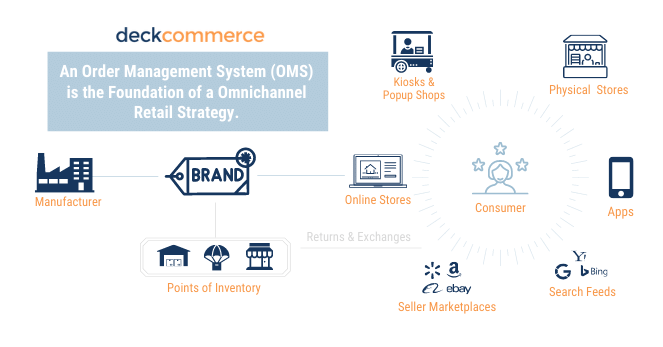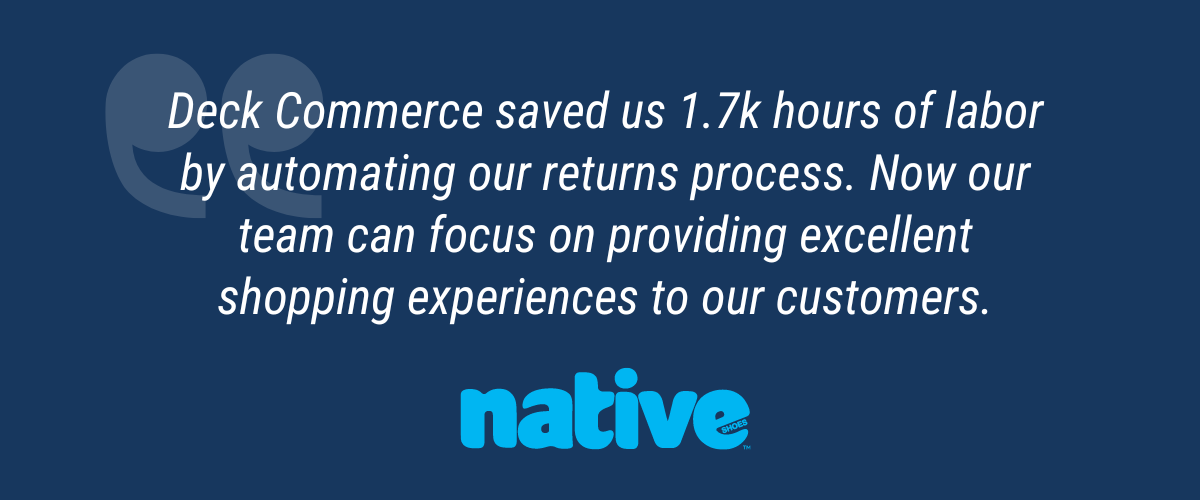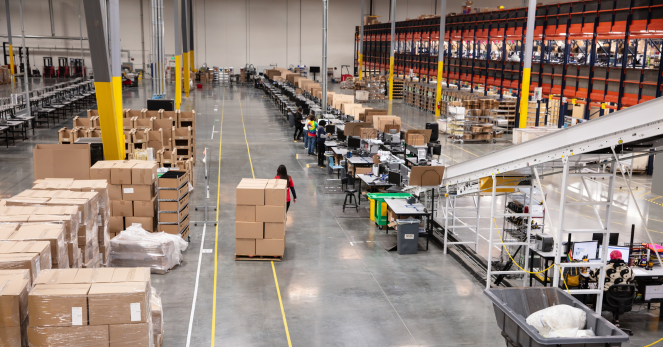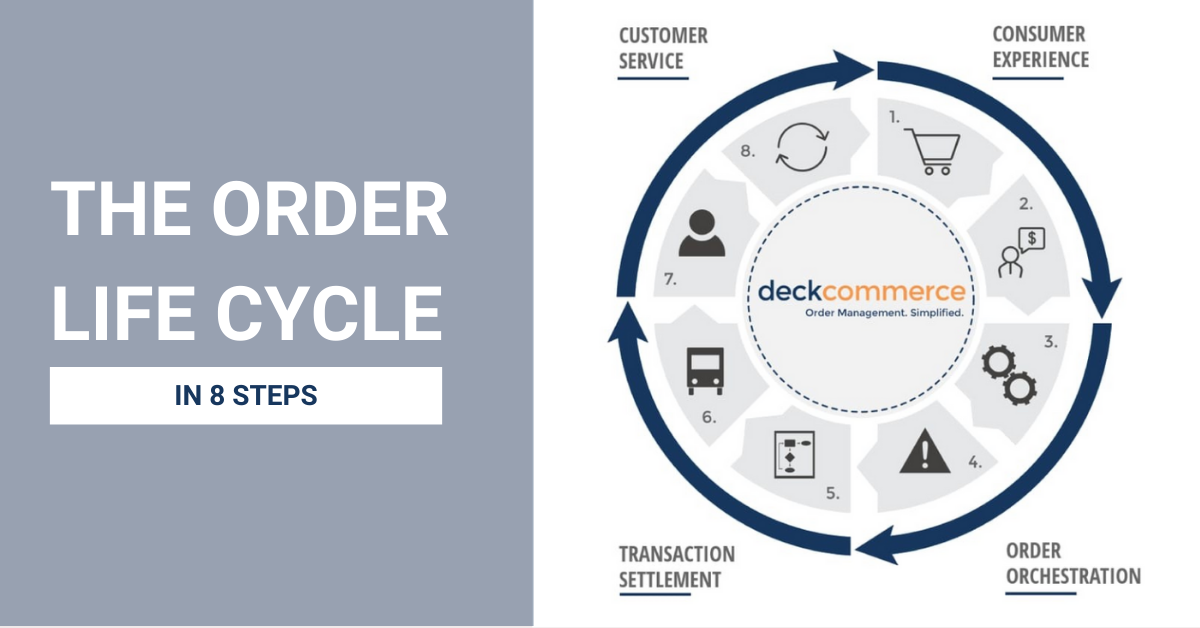
The retail sector has grappled with a widespread labor shortage in recent years.
This scarcity of manpower has particularly strained retail fulfillment operations, a key area that ensures customers receive their orders promptly and accurately.
As brands search for sustainable solutions to retail worker shortages, many turn to their order management system (OMS).
Exploring The Retail Fulfillment Labor Shortage

Retail fulfillment requires intricate coordination of multiple moving parts — from order intake, inventory management, and logistics to finally ensuring a product is in the hands of a customer.
Historically, many of these processes heavily relied on manual processes.
However, with the rise of retail employee labor shortages, especially in recent years, manually processing orders is no longer sustainable.
What’s Behind the Shortage of Retail Workers?
- Seasonal Peaks: Labor demands in retail aren't consistent year-round. There's an upsurge during holiday seasons, sales, and promotions. Finding temporary labor to meet these peak demands can be challenging.
- Skilled Labor Demand: Retail is evolving. With more technologies in play, employees must manage and troubleshoot complex systems. A shortage of such skilled labor can impede efficiency.
- Turnover Rates: Retail, especially at the entry level, often experiences high employee turnover. This constant churning requires ongoing training and adaptation, stretching resources thin.
The Implications of Labor Shortages on Fulfillment:
- Delayed Deliveries: With fewer hands on deck, processing orders can slow down, leading to delivery delays. In today's age of instant gratification, this can negatively impact customer satisfaction and loyalty.
- Inaccurate Inventory Mismanagement: Manual inventory tasks, like restocking and auditing, become vulnerable to delays and errors. An incorrect stock count can lead to over-selling or stockouts, both detrimental to sales and reputation.
- Increased Costs: Hiring in a labor-scarce market often comes with higher wages, overtime payments, and employee retention incentives. These escalating labor costs can eat into the profit margins.
- Compromised Customer Experience: Beyond just delivery delays, a short-staffed store or helpline can lead to longer wait times, less personalized service, and general customer dissatisfaction.
The Ripple Effect on the Entire Retail Industry
The implications of labor shortages aren't limited to just direct retail operations. They have a ripple effect throughout the retail ecosystem.
- Supplier Delays: Shortages can affect suppliers who may take longer to manufacture or restock products, leading to cascading delays downstream.
- Logistical Challenges: Fewer delivery personnel or drivers mean that even if a store processes an order promptly, it might still face delivery delays.
Modern challenges require modern solutions, and automation, especially through advanced Order Management Systems, emerges as a beacon of hope in these trying times.
It offers a way to not only navigate the labor crisis but also to transform it into an opportunity for efficiency and enhanced customer experience.
Understanding Automated Order Management

An Order Management System (OMS) serves as the source of truth for all order information, orchestrating the entire journey of an order from purchase to delivery through returns.
Automation in this context doesn't just mean digitizing these processes; it represents a transformative shift in how brands operate, ensuring customer demands are met efficiently and effectively.
What Constitutes Order Management?
- Sales Order Entry: This is the initial point where an order is registered into the system, whether from an online platform, phone order, or in-store purchase.
- Inventory Visibility & Management: A pivotal component, it ensures that stocks are tracked in real-time. It gives retailers insight into which items are in stock, reserved, or out for delivery.
- Order Processing: Once an order is registered, the system determines how best to fulfill it. This might involve deciding from which warehouse to ship or which items to restock.
- Shipping & Delivery Management: After processing, the system coordinates with logistics providers to ensure timely and accurate delivery to the customer.
Automation in Order Management Systems
The magic begins when these components are automated. Here's what that looks like.
Real-time Data Analysis
Automated OMS platforms can instantly analyze vast amounts of data to make decisions. For instance, when deciding from where to ship an item, the system considers factors like proximity to the customer, inventory levels, and shipping costs, all in a split second.
Predictive Restocking
Using historical data and real-time sales trends, the system can predict when a product might run out and automatically place restocking orders, ensuring items are seldom out of stock.
Integration with External Systems
Today's OMS platforms don't operate in isolation. They integrate seamlessly with other systems – from CRM platforms capturing customer data to e-commerce platforms processing online sales.
This integrated ecosystem ensures a smooth flow of information, reducing redundancy and manual interventions.
Customer Communication
Once an order is placed, customers crave updates. An automated OMS sends real-time notifications about order status, dispatch details, and delivery estimates, enhancing customer experience.
The Shift from Manual to Automated
Historically, each of these stages required manual oversight. Someone would physically check inventory, another would coordinate with shippers, and errors were common.
In an automated environment, the system performs these tasks with unmatched speed and accuracy, freeing up human resources to focus on more strategic, value-added activities.
4 Ways an Automated Order Management System Helps Brands Tackle Labor Shortages

Brands leveraging an order management system can counteract many of the challenges posed by labor shortages— providing not just a a stop-gap solution when needed, but building a long-term strategy for retail optimization.
Let's explore these advantages in depth.
Increase Efficiency and Speed
When facing a labor shortage, speed and efficiency are key. The speed at which orders are processed, inventories are updated, and products are delivered can make all the difference in customer satisfaction.

- Automated Order Processes: A dedicated order management system can automate up to 98% of order processes—including managing inventory levels, triggering customer communications and updating loyalty points, processing cancellations and returns.
- Reduce Customer Service Calls: By offering transparency, reducing errors, and empowering customers with self-service tools, an Order Management System can significantly reduce the strain on call centers and, in turn, elevate the overall customer experience.
Fulfill More Orders
Retail employees are limited in the number of orders they can manually process and fulfill. By automating those processes and routing orders to the best locations, brands can get more products out the door (and with less errors).
- Smart Order Routing: Set capacity levels to prevent fulfillment centers from being overwhelmed and allowing orders to get out to door faster.
- Omnichannel Fulfillment - Leverage retail stores as fulfillment centers, offer in-store pickup options (like BOPIS or Curbside) to reduce the burden on ecommerce fulfillment centers while maximizing the number of orders fulfilled.
Reduce Costs
Amidst tight margins and fierce competition, cost efficiency remains a pivotal concern for retailers.
Balancing expenses with operational demands, especially during labor shortages, can be challenging. An OMS streamlines processes to help brands reduce costs and maximize profits.
- Reduced Manual Errors: Automated processes minimize human errors, which can lead to costly rectifications, refunds, or compensations.
- Optimized Labor Costs: While the initial investment in an automated OMS might seem significant, in the long run, it saves costs related to hiring, training, and managing a large workforce.
Enhance Customer Experiences
Customer expectations are higher than ever. The experience a shopper has, from browsing to delivery, can significantly influence their loyalty and future purchase decisions.
An order management system is pivotal in elevating and ensuring a consistently stellar customer experience, even amidst staffing challenges.
- Consistent Service: Customers experience consistent service quality regardless of staffing levels, from order placement to delivery.
- Set Delivery Expectations: Let shoppers know when they can expect their product and notify them every step of the order journey.
- Convenient Fulfillment Options: For brands operating brick-and-mortar stores, showcase store inventory right on the storefront to encourage omnichannel fulfillment options (reducing the number of orders having to be fulfilled by your employees).
Overcome Labor Shortages While Saving Time & Money with Automated Order Management
Create seamless shopping experiences & increase average order value without breaking the budget with an out-of-the-box order management solution.
With Deck Commerce OMS, your business can:
- Reduce call center support activities by 40%
- Reduce labor costs for return processes by 60%
- Save an average of $4.42 per order
- Improve operating margins by 4%
Try out our ROI calculator here.
You can use this calculator to determine your cost and time savings when implementing the Deck Commerce OMS. Enter your annual order volume and time spent processing each order to see your savings.

.png?width=2000&height=2000&name=Blog%20Directory%20CTA%202000x2000%20px%20(3).png)


.png?width=2000&height=2000&name=Blog%20Directory%20CTA%202000x2000%20px%20(2).png)






